Welcome to
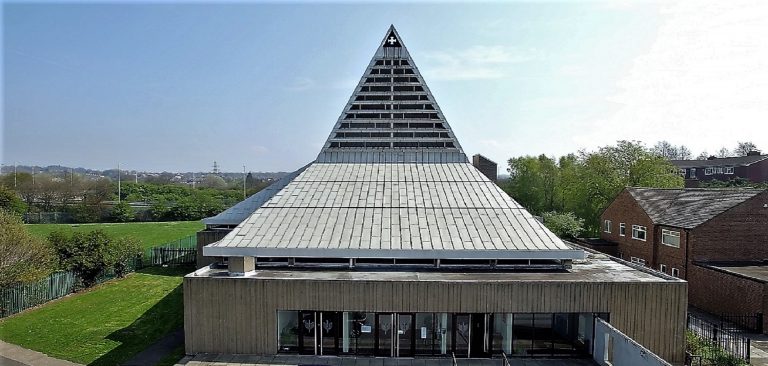
Welcome to
Saint Michael and All Angels Church
In the parish of Saint Philip Neri
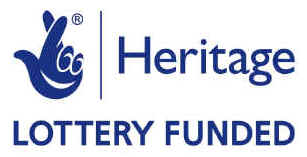

In the parish of Saint Philip Neri

Sunday 11:00am
Monday 9:15am
Tuesday No Mass
Wednesday No Mass
Thursday 9:15am
Friday No Mass
Saturday 6pm
“The cross is the gift God gives to his friends.”
Saint Philip Neri
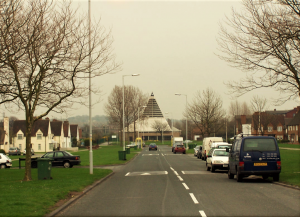
St Michael and All Angels was one of the first Vatican II-
It is a Grade II listed building.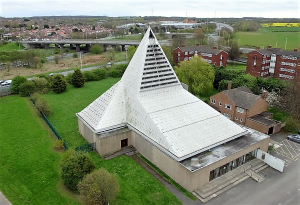
The parish of St Michael and All Angels was founded to serve the Catholic community of Woodchurch and Prenton in 1952, and for the first four years, the Mass was said at the chapel of Landican Cemetery. After the opening of the school buildings at Woodchurch in 1956, the school hall became the centre of parochial activity until the opening of the church in September 1965. The building was awarded an RIBA Bronze Medal in 1967.
The church was designed by Richard O’Mahony of the F. X. Velarde Partnership, and was commissioned in 1962. The site of the church at the end of a wide avenue almost one mile long through the planned settlement of Woodchurch, led to the concept of a building with a certain dominance, placed symmetrically on the axis of the avenue.
Dominance is achieved by the lines of the great tented roof, which springs from the four corners of the nave in a series of folded planes that culminate in a point above the altar. The roof, which is steel framed and clad in sheet aluminium, rises to a height of 26 metres and is louvred on the west face to throw light onto the sanctuary below. 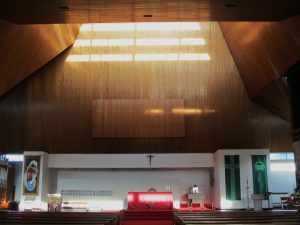 A horizontal slot in the east face of the roof casts light into the Blessed Sacrament chapel. The enclosing walls are of ribbed reinforced concrete, with the roof lifted above a horizontal clerestory to provide a sensation that it is floating.
A horizontal slot in the east face of the roof casts light into the Blessed Sacrament chapel. The enclosing walls are of ribbed reinforced concrete, with the roof lifted above a horizontal clerestory to provide a sensation that it is floating.
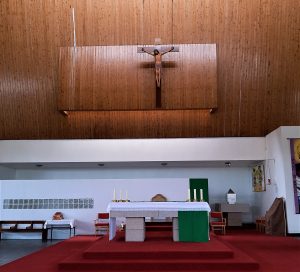 On entering the church, attention is centred on the altar, set in a spacious sanctuary and lit from above. The congregation gathers on three sides of the altar, the main nave, and two transepts of unequal size, one used by the choir, and the other now a day chapel. Behind the sanctuary, and separated by a textured concrete screen within inset glass blocks is the Blessed Sacrament Chapel, whose altar supports the tabernacle. The tabernacle, which is of silver, was designed by the late F. X. Velarde, and was made so as to be clearly visible on entering the church.
On entering the church, attention is centred on the altar, set in a spacious sanctuary and lit from above. The congregation gathers on three sides of the altar, the main nave, and two transepts of unequal size, one used by the choir, and the other now a day chapel. Behind the sanctuary, and separated by a textured concrete screen within inset glass blocks is the Blessed Sacrament Chapel, whose altar supports the tabernacle. The tabernacle, which is of silver, was designed by the late F. X. Velarde, and was made so as to be clearly visible on entering the church.
The altars, font and lectern are constructed of Mourne granite, with polished tops but left matt on the vertical surfaces. A black brick tower to the west of the day chapel, framed by glazed slots in the roof, was intended to act as an organ loft, but the organ was never built. Instead a nineteenth century organ in a discordant Gothic organ case was introduced in the 1990s. 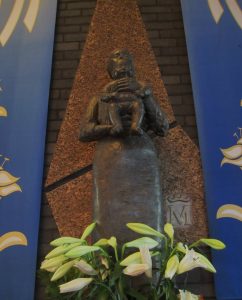 A small concrete base projects from the lower part of the tower’s north wall and is surmounted by a life-
A small concrete base projects from the lower part of the tower’s north wall and is surmounted by a life-
The church was designed to accommodate 650 people, and is the largest Catholic Church in Wirral. The contractors were Mohin of Bebington, and the cost excluding fees was £75,000. All the sanctuary and sacristy furniture and fittings were designed by the architect and cost a further £6,900.
A short video showing the construction of the church
A video tour highlighting some of the feature of our church
A quiet reflection using the images of the Stations of the Cross in our church